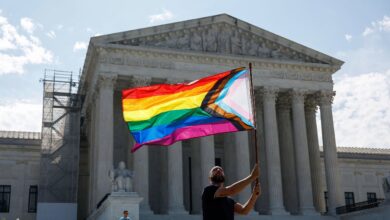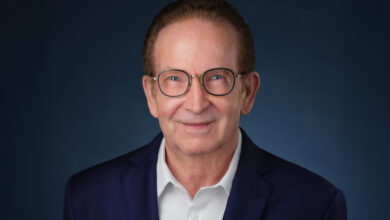President Kennedy and His Gay Best Friend
Spring 1933, two schoolmates began a lifelong friendship. LeMoyne Billings, a closeted gay teenager, was immediately attracted to the young Jack Kennedy. Though evidence suggests Lem made sexual advances that Kennedy spurned, their friendship flourished….
By Blase DiStefano
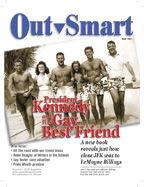 For those readers too young to remember the White House in the early ’60s, here are a few facts (at the time of this interview in 2007): It was home to the youngest president ever. President John Fitzgerald Kennedy was 43 years old (a first … and a last) and Catholic (also a first … and a last). The first lady was Jacqueline Kennedy, and the couple had two children, Caroline and John Jr. The First Couple had many gay friends, though the early ’60s was not a time when that was discussed.
For those readers too young to remember the White House in the early ’60s, here are a few facts (at the time of this interview in 2007): It was home to the youngest president ever. President John Fitzgerald Kennedy was 43 years old (a first … and a last) and Catholic (also a first … and a last). The first lady was Jacqueline Kennedy, and the couple had two children, Caroline and John Jr. The First Couple had many gay friends, though the early ’60s was not a time when that was discussed.
I spoke with David Pitts about his new book, Jack and Lem: John F. Kennedy and Lem Billings—The Untold Story of an Extraordinary Friendship (Carroll & Graf Publishers).
Blase DiStefano: How did you find out about Lem Billings?
David Pitts: I found out because of my own interest in the Kennedy presidency. I read all the JFK books, and I became aware of Lem Billings over the years in these books. Some writers suggested that he was gay, and Gore Vidal in his memoir Palimpsest even called Lem “chief faggot of Camelot”—he definitely picks up on Lem being gay. So it was kind of hinted at, but nobody really looked into it.
What made you decide to go this route?
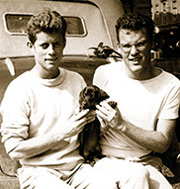
It was kind of a circuitous route. When I left full-time journalism in 2003, I knew I wanted to do a JFK book because of my interest in the Kennedy presidency. I didn’t want to do the same old story that everybody keeps on doing every time about the Cuban Missile Crisis and so on. So I thought to myself that Lem Billings—this kind of a shadowy figure that I’d read about over the years—was probably a close political confidant of the president and that there was a story here about his political influence behind the scenes.
That’s what I thought was going to be the story when I started this project. And it was only after I got into the interviews and started looking into the documents and the letters that I realized this was a personal friendship and not a political friendship.
Was it common knowledge in the administration that Lem Billings was gay?
It’s not clear that anybody in the administration knew for sure. They certainly thought that because he was at the White House so often, he seemed misplaced there. Some other people who weren’t in the administration but were friends of the president certainly picked up on it. I had an interview with Ben Bradlee [former executive editor of The Washington Post] for example, and he certainly sensed LeMoyne was gay. But it was a different time, and there was no real discussion about it, and Ben Bradlee told me he didn’t bring it up with the president and the president didn’t bring it up with him. So I would say it was generally sensed but not known.
Is there any indication that Lem was in love with Jack?
Yes. There are various indications of that. I think the best example is a quote that I used in the book. He’s on the record as saying, “Jack made a big difference in my life. Because of him, I was never lonely. He may have been the reason I never got married.” So there are various indications of his profound attachment to Kennedy.
Is there any indication of Jack’s response to his finding out that Lem was gay?
There is a response early on in the friendship. LeMoyne attempted a sexual proposal to John Kennedy—this was at Choate.
About how old were they at this time?
This would be when Lem was 17 and Jack was 16. Although we don’t have a record of what Lem wrote to Jack, we do have a record of Jack’s response, and he essentially rebuffed the sexual advance but not the friendship.
So how do you account for Kennedy, especially being Catholic, keeping the friendship going and not being homophobic?
Very, very surprising, especially in the 1930s before the Kinsey reports, before everything. This was a question I asked various people who knew John Kennedy, including Gore Vidal and Ben Bradlee. They basically said he was a member of the upper class, that he was comfortable around gay people, even as president, and he wasn’t a judgmental type of guy. This was the response they gave to me—that it was never a problem to him, not only with LeMoyne, but with other gay people he knew, such as Gore Vidal.
What must it have been like for Lem being gay in the 1930s?
Extremely difficult. Like almost every gay man at that time he felt compelled to live a secret life, not only because he was a friend of Jack Kennedy, but in order to have a successful career, which he did in advertising. He knew that was necessary, and, like all gay people, he paid a price for that, which became apparent later in his life when he began drinking quite a bit.
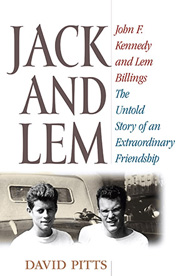 It apparently colored his entire life. And I guess it colored how he later talked about his life, like the quote you mentioned about how he could have gotten married.
It apparently colored his entire life. And I guess it colored how he later talked about his life, like the quote you mentioned about how he could have gotten married.
I hate to do what other authors always say, which is say read the book, but there is no substitute for reading the book and seeing what Lem himself said in the various letters and his 815-page oral history, which I used extensively for the book. You can see him struggling with trying to be candid about what he felt. He obviously wanted to be. He died in 1981, and certainly during the time when he was alive, he felt it was not possible for him to be that candid.
At the time that Lem and Jack met, basically it was OK for men to be intimate, affectionate without sex. I was thinking specifically of the photo of men and women arm in arm, with Lem and Jack the only two males arm in arm. That to me says a whole lot about that era, because in today’s society, certain people would look at that and flinch.
That’s one point I tried to make in the book in one of the chapters. Ironically, in some ways gay people had more license at that time than they do now. Homosexuality wasn’t on the radar screen, the general population wasn’t really aware of it, and so, in a sense, gay people could do certain things, such as the example that you gave, and it did not come under suspicion the way it clearly would today.
Today it would be assumed they were gay. And about the quote, about Lem never getting married — do you think his love for Jack kept him from having a serious relationship with another man?
It seems to have. A major source for the book was a man named Larry Quirk, who is an editor and writer in New York and has published a number of books himself. He knew Lem and had a sexual involvement with Lem, but he told me that even though Lem had various sexual involvements throughout his life, including with him, that there was only one person he really loved and that was Jack Kennedy.
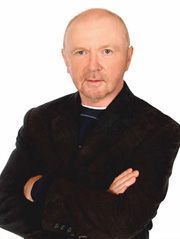
Do you think Kennedy’s most important relationships were with men?
I’ve thought about it a great deal after writing the book. Our language in society is really inadequate to express the range of involvements and emotions that people have in this regard. But if I were to summarize John Kennedy, I think what I found out in writing this book is that his sexual preferences were women, but his attachments were to men. So I don’t know what that makes him—there’s no word for that, right? [Both laugh] He did have some pretty profound attachments to women, but he also seemed to want and need strong attachments to men that were not sexual.
At that time I think it was easier to do that. Now it’s more suspect: “If I have this type of relationship with a man, people are going to think I’m gay…”
I think you’re exactly right. I don’t think it was uncommon at the time. This was before the women’s movement when women were thought of as sex objects and they weren’t allowed into certain clubs, particularly in Washington, or even in the National Press Club where women weren’t allowed even as journalists. Women were considerably downgraded in importance in society at large, so it wouldn’t be surprising, particularly in elite circles, if men’s strongest attachments were to other men.





